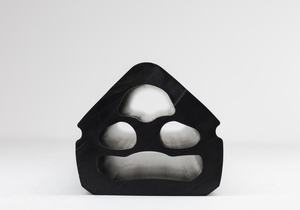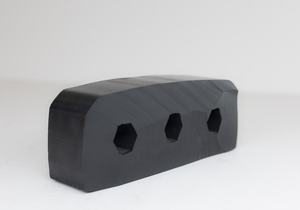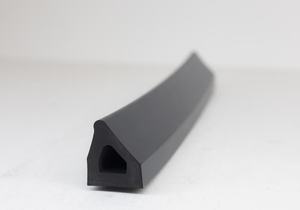Marine and hatch cover seals are critical components used in marine vessels, ships, and offshore structures to provide watertight and weatherproof sealing between various compartments, hatches, doors, and openings. These seals play a vital role in maintaining the structural integrity, safety, and operational efficiency of maritime assets by preventing the ingress of water, air, dust, or pollutants, while also accommodating movement, vibration, and thermal expansion or contraction in harsh marine environments.
Here’s a comprehensive description of marine and hatch seals:
- Functionality: Marine and hatch seals serve several essential functions within marine and offshore systems and equipment, including:
- Watertight Sealing: Marine seals prevent water ingress into compartments, hulls, or enclosed spaces, ensuring buoyancy, stability, and safety of vessels and offshore structures.
- Weatherproofing: Seals protect interior spaces from harsh weather conditions, including rain, spray, wind, and saltwater exposure, preserving equipment, cargo, and personnel comfort.
- Fire Protection: Seals with fire-resistant properties provide containment and compartmentalization in the event of fire emergencies, preventing the spread of flames, smoke, and toxic gases throughout the vessel.
- Noise and Vibration Damping: Seals attenuate noise transmission and dampen vibrations generated by machinery, engines, or propulsion systems, enhancing crew comfort, safety, and productivity.
- Security: Seals enhance security by preventing unauthorized access to sensitive areas, cargo holds, engine rooms, or navigation equipment, ensuring compliance with maritime security regulations.
- Types of Marine and Hatch Seals:
- Rubber Seals: Rubber seals, including extruded profiles, gaskets, and molded seals, are commonly used for hatch covers, doorways, windows, and access panels. They are made of elastomeric materials such as EPDM, neoprene, silicone, or natural rubber, offering flexibility, resilience, and durability in marine environments.
- Compression Seals: Compression seals, also known as compression gaskets or bulb seals, are designed to compress against mating surfaces, creating a watertight seal when pressure is applied. They are used in hatch covers, manholes, scuttles, and bulkheads to withstand water pressure and ensure integrity under dynamic loading conditions.
- Mechanical Seals: Mechanical seals, such as hatch locking systems, clamp-down mechanisms, or latches, provide secure closure and sealing of hatches, doors, or access points in marine vessels and offshore platforms. They may incorporate locking pins, bolts, levers, or hydraulic actuators for reliable operation and quick release during emergency situations.
- Inflatable Seals: Inflatable seals consist of a flexible elastomeric tube or bladder encased within a reinforced fabric or rubber housing. When inflated with compressed air or gas, they expand to fill gaps and create a tight seal against irregular or uneven surfaces, making them suitable for sealing hatch covers, stern seals, or pipe penetrations.
- Metallic Seals: Metallic seals, such as metal-to-metal seals, gaskets, or flange connections, are used in high-pressure or high-temperature applications where rubber or elastomeric seals may not be suitable. They provide reliable sealing against extreme conditions encountered in marine propulsion systems, piping networks, or pressure vessels.
- Hydraulic Seals: Hydraulic seals, including piston seals, rod seals, wipers, and wear rings, are used in hydraulic systems, steering mechanisms, and marine winches to prevent fluid leakage and maintain pressure integrity under dynamic motion and heavy loads.
- Material Composition: Marine and hatch seals are made from a variety of materials selected based on their performance characteristics and environmental suitability, including:
- Elastomers: Rubber compounds such as EPDM, neoprene, silicone, or fluorocarbon offer excellent weather resistance, UV stability, and flexibility for marine sealing applications.
- Thermoplastics: Polyurethane, polyethylene, or PVC materials provide chemical resistance, low friction, and dimensional stability for specialized sealing requirements.
- Metals: Stainless steel, aluminum, or brass alloys are used for metallic seals and fasteners in high-pressure or corrosive environments where strength, durability, and corrosion resistance are essential.
- Fabrics: Reinforced fabrics such as nylon, polyester, or aramid fibers may be incorporated into inflatable seals or fabric-reinforced rubber seals to enhance tear strength, abrasion resistance, and dimensional stability.
- Operating Conditions: Marine and hatch seals are designed to withstand the challenging conditions encountered in maritime environments, including:
- Saltwater Exposure: Seals must resist corrosion, degradation, and swelling caused by exposure to seawater, salt spray, and marine organisms.
- Temperature Extremes: Seals must function effectively across a wide range of temperatures, from freezing conditions in polar regions to high temperatures in tropical climates or engine rooms.
- UV Radiation: Seals exposed to sunlight or outdoor environments require UV stabilization to prevent degradation, discoloration, or embrittlement over time.
- Dynamic Loading: Seals must accommodate dynamic motion, vibration, and shock loading experienced during vessel operation, docking maneuvers, or heavy weather conditions.
- Compliance Requirements: Seals used in marine vessels and offshore installations must meet regulatory standards and classification society requirements for safety, reliability, and environmental protection.
- Installation and Maintenance: Proper installation and maintenance practices are crucial for ensuring the effectiveness and longevity of marine and hatch seals:
- Installation: Seals should be installed according to manufacturer specifications, using compatible adhesives, sealants, or fasteners to achieve proper alignment, compression, and sealing.
- Inspection: Regular inspection of seals for signs of wear, damage, or deterioration is necessary to identify and address potential issues before they compromise sealing performance.
- Cleaning and Lubrication: Seals should be cleaned regularly to remove debris, salt deposits, or contaminants that could impair sealing effectiveness. Lubrication of moving seals and mechanisms helps reduce friction, wear, and corrosion.
- Standards and Certification: Marine and hatch seals may comply with international standards and regulations established by organizations such as the International Maritime Organization (IMO), classification societies (e.g., Lloyd’s Register, ABS, DNV GL), and national authorities (e.g., US Coast Guard, European Union directives). Compliance with standards ensures that seals meet specified performance criteria for safety, reliability, and environmental protection.
- Applications: Marine and hatch seals find widespread applications across various maritime sectors, including:
- Merchant Shipping: Seals are used in cargo ships, container vessels, tankers, and bulk carriers for hatch covers, watertight doors, engine room closures, and access panels.
- Offshore Industry: Seals are employed in offshore platforms, drilling rigs, floating production units, and marine terminals for weatherproofing, fire protection, and safety systems.
- Naval Vessels: Seals are critical components in naval ships, submarines, and surface combatants for compartmentalization, flooding control, and damage resistance.
- Passenger Ferries and Cruise Ships: Seals provide safety, comfort, and environmental protection for passengers, crew, and cargo in passenger ferries, cruise liners, and luxury yachts.
- Fishing and Workboats: Seals are used in fishing vessels, tugboats, and workboats for hatch sealing, hull protection, and equipment enclosure.
Marine and hatch cover gaskets play a crucial role in maritime operations by providing watertight, weatherproof







